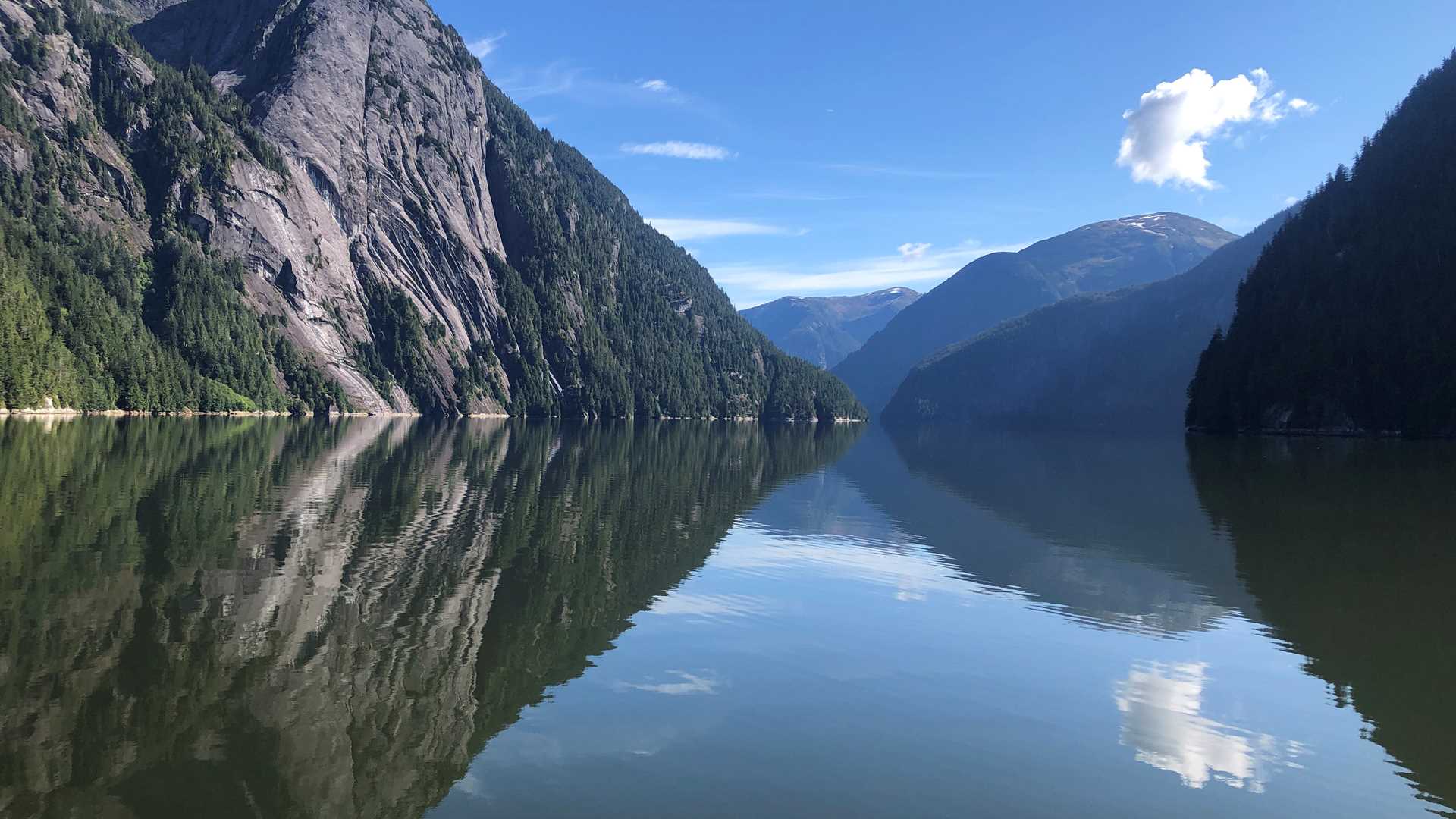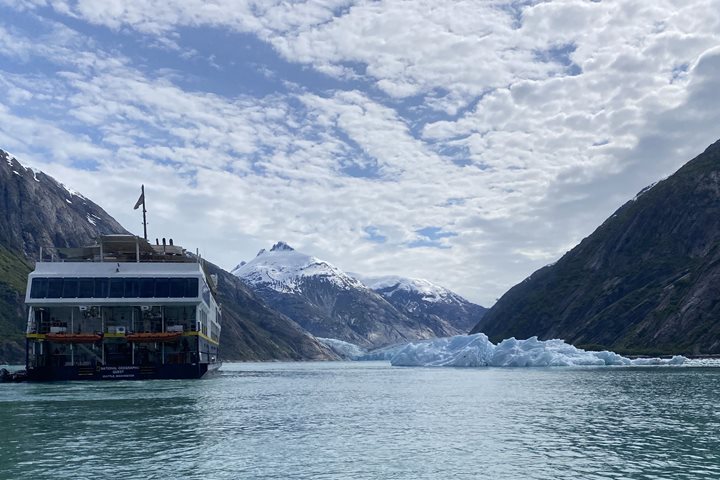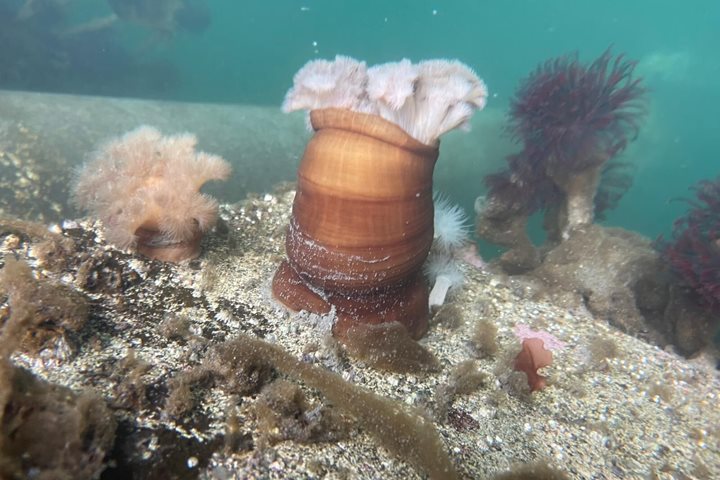This morning we explored LeConte Glacier, the southernmost tidewater glacier in North America. It flows out of the Stikine ice field, thousands of feet up in Alaska’s Coastal Range. Known for the massive icebergs, the glacier is named after famed nineteenth-century geologist Joseph LeConte. The mouth of this fjord, LeConte Bay, is an ideal spot for small exploratory crafts like our Zodiacs. In the afternoon, we cruised north through Frederick Sound and then north into Stephens Passage, always on the lookout for wildlife.
6/14/2025
Read
National Geographic Quest
Southeast Alaska
On the last full day of our voyage, we woke in Endicott Arm near the Dawes Glacier. We spent the morning enjoying Zodiac tours to the face of Dawes Glacier and watched multiple calving events. We were also able to spot several harbor seals, waterfalls, and a couple harbor porpoises on the way. After lunch we had the opportunity to participate in a polar plunge. Forty people decided to brave the frigid water for a short swim. Those of us not eager to jump into glacier water were able to watch from the bow. After the polar plunge, we warmed up on board as we started transiting towards Juneau. On the way, we stopped at a beautiful waterfall to once again admire the amazing natural beauty of Alaska. During our farewell recap, we were treated to a quick visit by a humpback whale. We ended our day with a slideshow made up of our favorite photos and memories of an amazing week on board National Geographic Quest .







